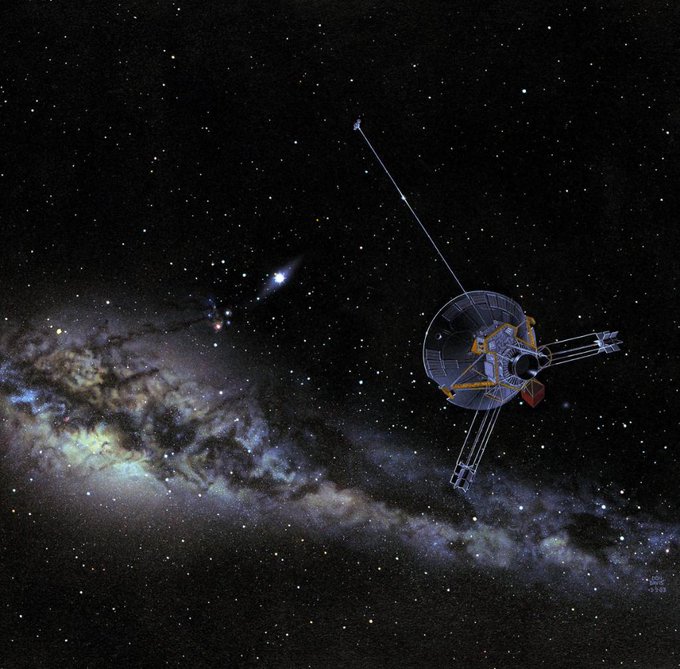"Houston, Skylab. I'd like you to be the first to know that the pilot is the proud father of a genuine flare." 🌟
Skylab's Apollo Telescope Mount (ATM) had 8 telescopes for observing the Sun at different wavelengths. #Skylab50 1/3
#OTD in 2012, @NASAHubble's Wide Field Camera 3 captured this photo of Planetary Nebula NGC 5189. The unique structure of NGC 5189 was formed by a dying star shedding its outer layers.
The Apollo 16 patch shares a portion of its design with NASA's 'meatball' logo and the official NASA seal! The wishbone, or the chevron, intersects both emblems.
#MissionPatchMonth
These images, taken in 1983 (IRAS, InfraRed Astronomical Satellite) and 2006 (Spitzer Space Telescope), show the galaxy's center in infrared, highlighting the hottest, most active areas of the Milky Way.
The Juno spacecraft, launched #OTD in 2011, took the following image of Jupiter’s south pole from an altitude of 52,000 km (~32,000 miles). The oval features seen in the picture are cyclones, of up to 1,000 km (~600 miles) in diameter.









